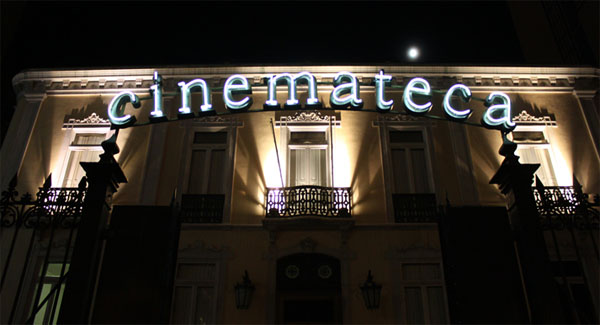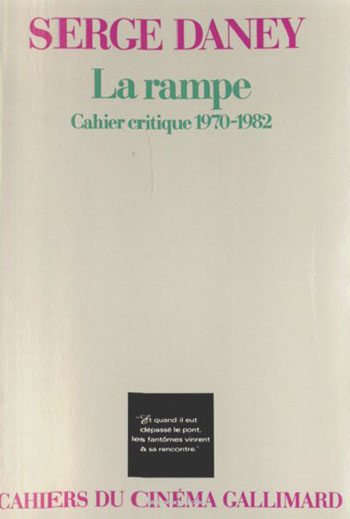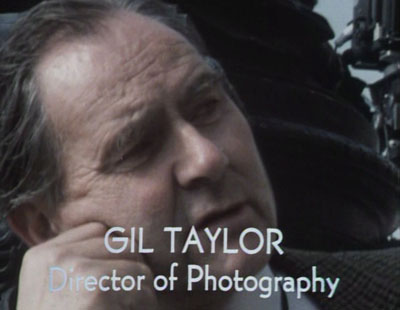To address the most urgent item first, as Susan Watkins argues in the current issue of the London Review of Books, while the euro crisis might not be making headlines these days, don’t think for a moment that it’s over. Instead, “more than half the Eurozone’s population” has been thrown “into perpetual recession,” and the suffering’s particularly acute in Greece, Spain, Italy, Ireland—and Portugal, where it looks like the Cinemateca Portuguesa may be in trouble. In a recent posting to Facebook, the renowned writer and filmmaker Hartmut Bitomsky warns: “The Portuguese state cannot steal away from supporting this institution without doing irreparable damage to its people. Even in most difficult and adverse times a government has to sustain the cultural identity of their country and its uncompromised destination in the civilized world.”
On to the weekend reading. As Gary Morris notes in his opening editorial, the new issue of Bright Lights, the 81st (!), features the concluding installment of Alan Vanneman‘s in-depth survey of the work of Charlie Chaplin. He also has some pretty good fun with Nöel Coward and Ernst Lubitsch. Plus: Gordon Thomas goes epic on Fritz Lang‘s Die Nibelungen. There’ll be no new issue of a major film journal this year without a piece on Allan Dwan, and here, it comes from Imogen Smith (from whom we’ll hear again in a moment).
Tyler Sage pits Spielberg’s Lincoln against Tarantino’s Django Unchained; D.J.M. Saunders considers the theme of double suicide in the work of Yuzo Kawashima, Roger Corman, Luc Besson, Henry Bean, and Michael Haneke; Jesse Stommel argues that “the story of the zombie is a story of colonization—reverse colonization to be exact, a story where the Other finally has its day”; Steve Johnson reads Curtis Harrington’s memoir, watches his shorts, and revisits Night Tide (1961); and then there are the revivals, the reviews, and more.
In December 1988, just months before Histoire(s) du cinema would be broadcast on French television, Serge Daney spoke at length with Godard about, well, history and cinema. You can close your eyes and drop your cursor just about anywhere on this page at diagonal thoughts and find you’ve landed on something sig file-ready. (Remember sig files?)
Meantime, Laurent Kretzschmar and Otie Wheeler have posted their translation of the concluding text from Daney’s La rampe, his first book published as a film critic, a collection of writings for Cahiers du cinéma between 1970 and 1982. The introduction is here, and all intervening installments can be found at Serge Daney in English.
“L.A.’s a movie town, and I am a movie person, but it’s different—you have to be careful when someone asks your opinion of a film, for when you cheerily call it ‘a fucking fraud,’ you may be talking to someone who worked on it.” In his latest “Bombast” (#106) at Sundance Now, Nick Pinkerton travels from Los Angeles and the recent Everything Is Festival to San Francisco to catch new work by Mike Kuchar.
Two at the Chiseler. First, Dan Callahan on ZaSu Pitts, “a screen performer who became synonymous with comic dithering, with indecision, with oh-dearie-me helplessness. She became famous for that name, for her staring, drippy blue eyes, and especially for her wandering hands, with those fingers that could seem creepily formless but then stiffen into claws when she tried to embrace someone.”
And Imogen Smith on Three on a Match (1932), in which Ann Dvorak “is riveting in her wasted beauty as she lies in a squalid room, summoning her strength to make the ultimate motherly sacrifice, flinging herself out the window with a message for the police written in lipstick on her silk nightgown. You would never guess from this film that Bette Davis would wind up the best known of the three actresses, or that Humphrey Bogart would become a beloved icon, while Ann Dvorak would sink into obscurity.”
It’s Vito Acconci Day at DC’s.
List. Edgar Wright‘s written up his top ten (plus one) Criterion releases.
New York. Kiyoshi Kurosawa’s Real has been added to the Main Slate of the 51st New York Film Festival.
London. Little White Lies highlights the best of FrightFest, on through Monday.
Obits. “Gilbert Taylor, the veteran British cinematographer of Star Wars, The Omen, and Dr. Strangelove, has died aged 99,” reports the BBC. The IMDb lists Taylor as cinematographer on 70 films, among them Richard Lester’s A Hard Day’s Night and Alfred Hitchcock’s Frenzy. “He also worked with Roman Polanski on such films as Repulsion and Cul-de-Sac, for which he received back-to-back Bafta nominations in consecutive years. According to his wife, Taylor ‘turned down a Bond picture’ to work with Polanski, ‘because he thought Roman was a very interesting guy.'”
And another cinematographer passed away yesterday. Vadim Yusov was 84 and best known for his work with Tarkovsky, having shot The Steamroller and the Violin, Ivan’s Childhood, Andrei Rublev, and Solaris.
Vadim Rizov looks back on the work of both cinematographers at the Dissolve.
Updated entries: Wong Kar-wai, Satyajit Ray, and remembrances of Elmore Leonard.
For news and tips throughout the day every day, follow @KeyframeDaily on Twitter and/or the RSS feed. Get Keyframe Daily in your inbox by signing in at fandor.com/daily.






